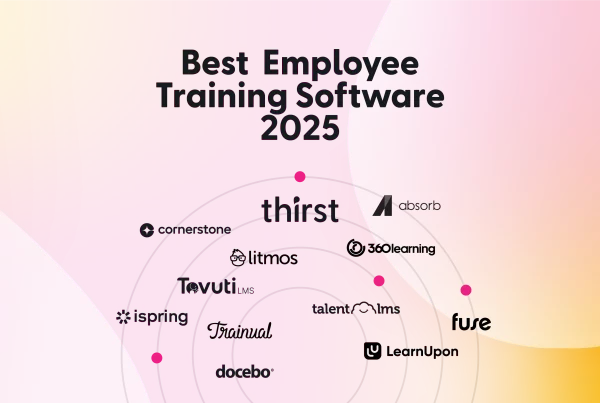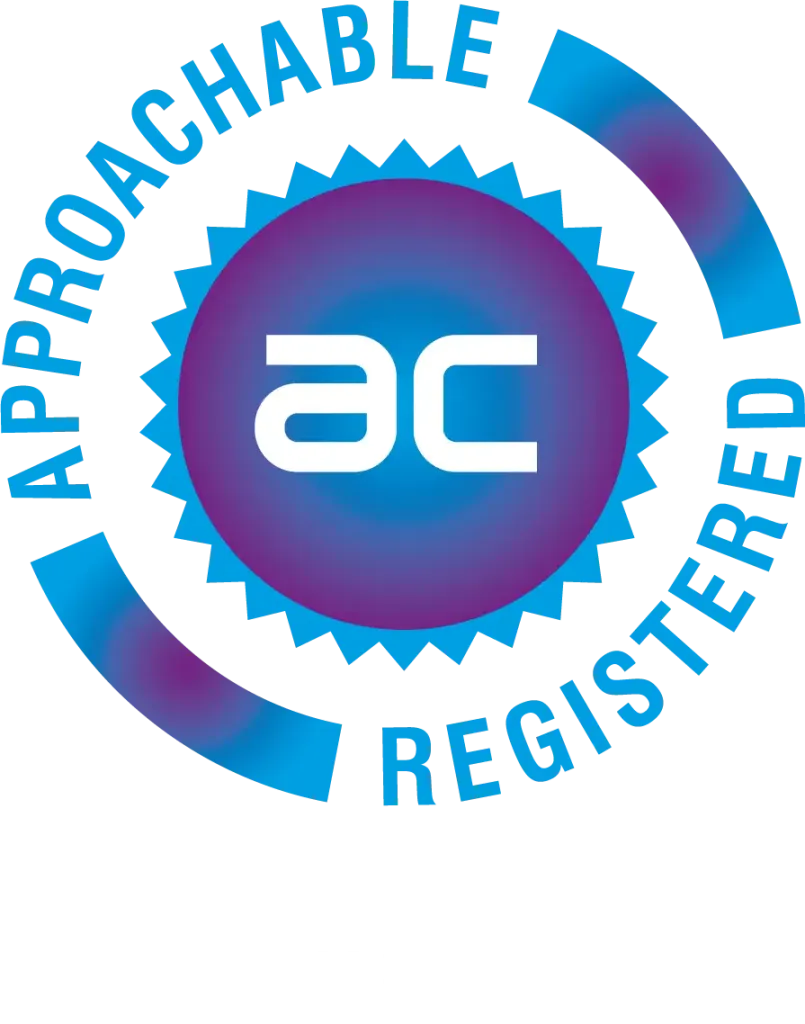There’s no right way to learn.
There are just different ways to learn.
This is true of everything.
But none is more apparent than in the workplace. 🤔
Some of us are visual learners.
People who absorb information best when it’s presented to them visually. They gravitate towards graphs, diagrams, and presentations.
Some of us are auditory learners.
People who prefer to listen to podcasts, watch videos, or partake in conversations.
Yet more people are logical learners
Who need structure, processes, reasoning, and active engagement to fully grasp something. Sound examples of logical learning include solving riddles, following a recipe for Grand Marier souffle, or putting the pieces of a puzzle together. 🧩 🙂
All learning styles have distinct differences and surprising similarities.
However, one consistent factor with each is that all learning styles demand a certain amount of autonomy. After all, a learning experience without participant interest or engagement is unlikely to reap rewards.
That’s why we’ve put together the ultimate guide to learner autonomy. 🙌
Keep reading below to uncover everything you need to know about learner autonomy. And how you can implement the learning process in your organisation to cultivate a robust, fruitful learning culture. Starting with the basics.👇
What is learner autonomy?
Imagine for a moment that you want to learn how to be a good communicator.
Someone people listen to. Who is understood. Respected. Who influences.
No one is born with an innate ability to be the world’s best orator. Writer. Video presenter. Communicator.
Sure, some people are naturally more gifted communicators than others. Are at their finest in front of an audience with a microphone in hand. Can write elegant prose. Remain silent, and yet their body language and mannerisms tell a whole story.
Yet some people simply don’t possess this gift.👂👀🧍
How do you become a stellar communicator?
Well, this isn’t as simple as you might think.
But you could cultivate personality attributes that command respect. Enunciate clearly. Write eloquently. Connect with people. Make them feel valued. Don’t be afraid of responsibility. Make the hard decisions. Support and elevate others. Demonstrate integrity. 💭🖊️
The key to learner autonomy is to take charge of your own learning experience. Equip yourself with a range of skills to grow your knowledge, understanding and value. Set yourself goals and strive for success. Plan and complete learning activities tailored to different learning styles.
Apply these consistently to maximise success. Evaluate your progress. Hone actions for future success. 🚀
Why is learner autonomy important?
Learner autonomy plays an important role in workplace L&D.
It improves learning strategies and acts as a learner-engagement driver. Offer learners an autonomous learning approach through informed L&D, and you’ll better equip them to be productive and profitable in their personal and professional lives. 👌
Autonomy helps learners take charge of their personal and professional development, taking charge of their own learning needs, styles, and goals.
Having ownership and control over their own learning empowers learners, promoting a sense of responsibility and self-motivation, which, in turn, contributes to a stronger and more rewarding learning experience.
How to build learner autonomy in your organisation
Learners who are intrinsically motivated, who can identify what learning style best works for them, and who can excel within the parameters of that learning style will become valuable employees.
Bolster employee engagement. Increase adaptability and innovation while saving valuable manpower costs.
There are several ways that organisations can implement the necessary steps to ensure that their learning environment cultivates learner autonomy. We’ve outlined these below:
Future-proof L&D
Any L&D is only as successful as it is effective. Both today and in the future.
Organisations must adopt a long-term, strategic approach to any L&D solutions that they intend to implement. One that’s adaptable. One that doesn’t only fill pressing learning gaps, but also upskills employees.
A strategy that builds on foundational aptitude while enhancing efficiency as the organisation evolves.
Organisations that partner with L&D platforms, like Thirst, will equip themselves for the new era of L&D. They can take advantage of deep insights and social learning while developing skills and benefiting from a tailored AI-integrated learning experience. 📈
This demonstrates a commitment to ongoing innovation and the ability to adapt to changing circumstances while ensuring that everyone has access to relevant, up-to-date learning resources and promoting a continuous learning culture. And this leads us on to our next point.👇
Leverage the Right Technology
It would be unreasonable to expect people to take control of their own autonomous L&D without access to the right technology.
Outdated platforms, harkening back to the 2010’s or, God forbid, earlier, simply aren’t equipped to handle the modern demands of L&D, especially in an autonomous learning environment.
If an organisation’s aim is to optimise staff performance, they need to invest in modern, user-friendly, AI-integrated L&D platforms. Like Thirst’s. Platforms that offer personalised learning. AI-driven recommendations. Diverse content formats. Robust analytics and tracking. 📱 🖥️ 💻
This allows organisations to monitor learner progress. Measure the impact of learning initiatives. Identify areas for improvement. Integrate the platform with performance management systems and HR software to further streamline the learning process. And more.
Cultivate a Continuous Learning Culture
Autonomous learning is simply not possible without a continuous learning culture to support it.
This includes promoting the value of continuous learning. Fuelling an ethos that promotes growth and experimentation. Supporting people in the L&D journey. Emphasising the opportunities a progressive mindset offers.
To do this, organisations should encourage open communication and collaboration. Promote knowledge sharing.
Foster a supportive L&D environment—one that empowers people to explore how they learn. Recognise and reward learning achievements. Incentivise people to keep pushing forward on their learning journey.
Inspire people to engage in self-directed learning and contribute to a culture of continuous improvement. 📣 💸
The Five Stages of Learner Autonomy
There are five main stages of learner autonomy that L&D professionals agree on. This is true of all different types of learning, from classroom to adult learning, structured and unstructured learning, even life skills.
Dependence, which focuses heavily on learners being guided by educators to support them in their learning journey, Think of traditional education with linear progression routes.
This is the least autonomous of all learner pathways. One where learners are monitored and assessed to gauge their progress and determine competence. Learners may passively receive information and instructions but will not take ownership or even be active in the learning process.
Awareness demonstrates a degree of competence and trust that learners have already built a solid foundational understanding of the learning experience and are able to scale the knowledge already gained.
This allows learners to become aware of their own learning preferences, strengths, and weaknesses, in addition to identifying and leveraging resources and strategies to support the learning experience.
Involvement empowers learners to actively participate in their own learning experiences, therefore promoting a degree of autonomy and self-directed learning. 🧑🎓 🙋
This incentivises learners to set goals and make choices about what and how they want to learn, while actively seeking out relevant resources and opportunities to bolster their knowledge.
Learners begin to experiment with different learning approaches and take initiative when pursuing interests. 📙
Independence propels learners to demonstrate a high level of autonomy and self-regulation across their learning experience. 📗
This independence manifests itself in learners’ ability to work independently. Manage their time effectively. Monitor progress. And adapt to changing learning strategies when needed. Also, independent learning emphasises that learners take responsibility for outcomes while stressing the importance of setting and achieving learning goals.
Interdependence is the final learning stage, though traditionally, it is only adopted in some learning models. 💡
This final stage sees learners recognise the value of collaboration and interaction with others and the necessity of this throughout the learning journey.
If they reach this interdependence stage, learners may seek out peer learning opportunities, mentorships, and collaboration to deepen their understanding and exchange support and ideas to further enhance their understanding and value to an organisation. 🎓
Benefits of Learner Autonomy in the Workplace
Autonomous learning empowers learners to take control of their learning experience, make their own decisions, direct, innovate, think outside the box, and become leaders. It’s that simple.
But it’s so much more than that. Let’s review the comprehensive benefits of autonomous learning in detail.
Increased Motivation
People who have control over their own learning journey are more likely to fully engage with the learning material and, consequently, be more motivated to learn. This intrinsic motivation can lead to better retention and, ultimately, value for the organisation. 👍
Customised learning paths
Learners with greater autonomy have more opportunity to tailor a learning experience to their personal needs and preferences. This tailored learning experience can result in more effective learning because it specifically addresses knowledge gaps while promoting skill development. ☝️
Faster learning acquisition
Autonomous learners are more likely to take initiative, seeking out learning opportunities that are directly relevant to their role.
This proactive approach may result in faster skill acquisition and better performance.
Enhanced Retention
By being actively involved in the planning and direction of their own learning, people are more likely to retain the information they acquire.
Why?
Autonomous learning promotes a personal stake in the learning process while putting an onus on practical application through applying newly acquired knowledge to workplace situations.
Reduced training costs
Another key benefit of autonomous learning is that L&D teams can reduce the need for traditional, classroom-based learning. Not only does this free up valuable time, allowing people to focus on more important areas of their role, but it also saves organisations on training costs. 💰 😄
Cultivating a Learning Culture
Encourage learner autonomy, and your organisation will send a clear message that emphasises the importance of L&D. This empowers people to continually seek out ways to improve their knowledge and skillsets. 😄
Better Adaption to Change
Autonomous learning equips people to be adaptable.
This is especially important when facing change. Generally speaking, autonomous learners are more open to change, resilient, and accustomed to taking ownership of their own learning experience. 🙌
Improved employee satisfaction
Give people ownership of their own development, and they’ll grow in confidence with each new success. This is a key determinant of job satisfaction and engagement. People who feel that their own professional aspirations are met will have the autonomy to pursue individual learning goals and, ultimately, feel loyal to organisations.
Choose the Right LMS to Optimise Your Learner Autonomy
When learning, people want to feel engaged. Have access to a digital infrastructure around them that supports optimal learning. Optimises the learning experience. They want to feel supported by their peers and have ample opportunity to collaborate.
This means that having access to a robust L&D platform, one that supports skills acquisition and retention and is adaptable to varying needs, while leveraging the latest AI technology to improve insights and the overall learning experience, is paramount.
This is exactly what Thirst provides.
The infrastructure you need to optimise learner autonomy and, ultimately, organisational performance.
A way for you to wow learners. Impress decision-makers. Bolster your autonomous workplace performance. To have all your learning, knowledge, and resources together in one place.👌
Want to enjoy a new era of L&D? Take the 2-minute self-guided product tour.
For more e-learning insights, resources and information, discover the Thirst blog.
You may also enjoy:
What is Cognitive Learning Theory? | Learner-Centred Approach and its Benefits | How to Engage Gen Z Learners the Right Way







